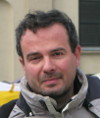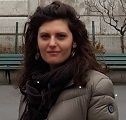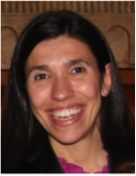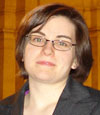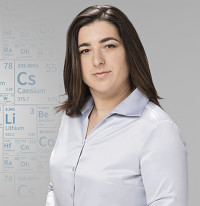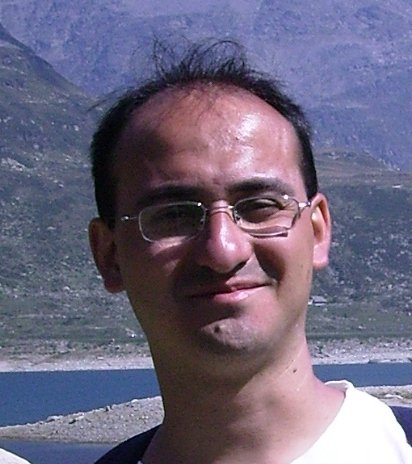Studying at the University of Verona
Here you can find information on the organisational aspects of the Programme, lecture timetables, learning activities and useful contact details for your time at the University, from enrolment to graduation.
Academic calendar
The academic calendar shows the deadlines and scheduled events that are relevant to students, teaching and technical-administrative staff of the University. Public holidays and University closures are also indicated. The academic year normally begins on 1 October each year and ends on 30 September of the following year.
Course calendar
The Academic Calendar sets out the degree programme lecture and exam timetables, as well as the relevant university closure dates..
| Period | From | To |
|---|---|---|
| I semestre | Oct 1, 2020 | Jan 29, 2021 |
| II semestre | Mar 1, 2021 | Jun 11, 2021 |
| Session | From | To |
|---|---|---|
| Sessione invernale d'esame | Feb 1, 2021 | Feb 26, 2021 |
| Sessione estiva d'esame | Jun 14, 2021 | Jul 30, 2021 |
| Sessione autunnale d'esame | Sep 1, 2021 | Sep 30, 2021 |
| Session | From | To |
|---|---|---|
| Sessione Estiva | Jul 19, 2021 | Jul 19, 2021 |
| Sessione Autunnale | Oct 19, 2021 | Oct 19, 2021 |
| Sessione Autunnale Dicembre | Dec 7, 2021 | Dec 7, 2021 |
| Sessione Invernale | Mar 17, 2022 | Mar 17, 2022 |
| Period | From | To |
|---|---|---|
| Festa dell'Immacolata | Dec 8, 2020 | Dec 8, 2020 |
| Vacanze Natalizie | Dec 24, 2020 | Jan 3, 2021 |
| Epifania | Jan 6, 2021 | Jan 6, 2021 |
| Vacanze Pasquali | Apr 2, 2021 | Apr 5, 2021 |
| Festa del Santo Patrono | May 21, 2021 | May 21, 2021 |
| Festa della Repubblica | Jun 2, 2021 | Jun 2, 2021 |
Exam calendar
Exam dates and rounds are managed by the relevant Science and Engineering Teaching and Student Services Unit.
To view all the exam sessions available, please use the Exam dashboard on ESSE3.
If you forgot your login details or have problems logging in, please contact the relevant IT HelpDesk, or check the login details recovery web page.
Should you have any doubts or questions, please check the Enrollment FAQs
Academic staff
 mariacaterina.baruffi@univr.it
mariacaterina.baruffi@univr.it
 maurizio.boscaini@univr.it
maurizio.boscaini@univr.it
 rossana.capuani@univr.it
rossana.capuani@univr.it
 vittoria.cozza@univr.it
vittoria.cozza@univr.it
 chiara.nardon@univr.it
chiara.nardon@univr.it
 claudio.tomazzoli@univr.it
claudio.tomazzoli@univr.it
Study Plan
The Study Plan includes all modules, teaching and learning activities that each student will need to undertake during their time at the University.
Please select your Study Plan based on your enrollment year.
1° Year
| Modules | Credits | TAF | SSD |
|---|
2° Year activated in the A.Y. 2021/2022
| Modules | Credits | TAF | SSD |
|---|
1 module among the following3° Year activated in the A.Y. 2022/2023
| Modules | Credits | TAF | SSD |
|---|
1 module among the following| Modules | Credits | TAF | SSD |
|---|
| Modules | Credits | TAF | SSD |
|---|
1 module among the following| Modules | Credits | TAF | SSD |
|---|
1 module among the following| Modules | Credits | TAF | SSD |
|---|
Legend | Type of training activity (TTA)
TAF (Type of Educational Activity) All courses and activities are classified into different types of educational activities, indicated by a letter.
Elements of Chemistry (2020/2021)
Teaching code
4S003712
Credits
12
Coordinator
Language
Italian
Also offered in courses:
- Basis of general chemistry of the course Bachelor's degree in Applied Mathematics
The teaching is organized as follows:
Learning outcomes
The aim of the course is to acquire the main concepts of General Chemistry and basics of Inorganic and Organic Chemistry. The course is divided into two modules: Elements of General Chemistry and Elements of Organic Chemistry, which are detailed below. Module Elements of General Chemistry: This module introduces the basics and foundations of Gen-eral Chemistry and Inorganic Chemistry. At the end of the course the students will be able to solve problems regarding the General Chemistry, showing good reasoning skills and ability in the connec-tion of different concepts. The course will also provide the students with basic know how necessary to attend other courses such as Organic Chemistry and Biochemistry. Module Elementsi of Organic Chemistry: This module presents the conceptual bases to provide the student with the basics of organic chemistry. Knowledge of organic compounds and their reactivity is the basis for dealing with advanced topics for the comprehension of biological and biomolecular phe-nomena. At the end of the course, the student will have to demonstrate the ability to deal with the structures and the chemical properties and typical reactions of the organic molecules and must be able to apply such knowledge to describe the reaction mechanisms. The basic concepts learned du-ring the course will provide students with the tools of molecular interpretation of the organization of biological systems.
Program
------------------------
MM: ELEMENTI DI CHIMICA GENERALE
------------------------
The course will be take place by three ways: in presence, in streaming and upon lecture recording. The support material (slides) will be vailable via the Moodle platform. Introduction. Chemical and physical properties of matter and their measurements. Elements, atoms and compounds. Nomenclature of inorganic compounds. Types of chemical reactions. Reaction stoichiometry. Ideal and real gases. Thermochemistry. Internal energy and enthalpy. Standard enthalpy of reaction and formation. Atomic structure. Atomic orbitals. Electronic configuration, Aufbau principle. Periodic properties: atomic and ionic radii, ionization energy, electron affinity, electronegativity. Elementary notions on the ionic bond. Ionic compounds. Covalent bond. Lewis formula. Resonance. Molecular geometry and polarity. Orbital hybridisation. Single and multiple bonds. Interparticle forces. Properties of liquids. Solutions. Binary liquid mixtures. Distillation. Properties of solids. Chemical kinetics. Arrhenius equation. Reaction mechanisms. Chemical equilibrium. Equilibrium constant. Acid-base equilibrium. Acid, base and salt solutions. Acid-base titration. Buffer solutions. Solubility equilibrium. Entropy. Spontaneous processes. Gibbs free energy. Standard free energy of reaction and formation. Electrochemical cells. Electrolysis. The course is made of 48 h of lectures.
------------------------
MM: ELEMENTI DI CHIMICA ORGANICA
------------------------
- Bond angles and carbon hybridisations, polarity of the molecules in relation to the electronegativity of the atoms of the molecule, the concept of resonance and different ways of representing the bonds, representation of the electron displacement in a reaction. - Acids and bases in organic chemistry: definitions according to Bronsted / Lowry and Lewis, how to predict the strength of an acid and the equilibrium position in an acid-base reaction, the relationship between molecular structure and acidity (resonance and relocation of the charge, inductive effect and electronegativity). - Saturated hydrocarbons: alkanes and cycloalkanes, nomenclature and structure, mention of combustion reaction and radical substitution, constitutional isomerism of alkanes, cis-trans isomers of cycloalcans, chair and boat conformations, equatorial and axial substitutions. - Unsaturated hydrocarbons: alkenes and alkynes, nomenclature, structure, characteristic reactions of alkenes: addition reactions and Markovnikov’s rule, regioselectivity, hydro-halogenation, hydration, halogenation, hydrogenation. - Chirality of the molecules: stereoisomers, enantiomers, diasteroisomers, optical activity and R / S configuration of a stereocentre, meso compounds and racemic mixtures, polarimeter and polarized light. - Alogenoalcans: nomenclature, structure, nucleophilic substitution and elimination reactions. Mechanisms SN1, SN2, E1, E2, stability of exiting groups, relative efficacy of nucleophiles, stability of carbocations, solvent effect, differences between intermediate and transition states, competition between nucleophilic substitution and elimination reactions, energy diagrams of a reaction. - Alcohols, phenols, ethers and thiols: structure, nomenclature and chemical properties, oxidation and dehydration reactions, secondary and tertiary primary alcohols, acidity comparisons. - Benzene and aromatic compounds: resonance and Huckel's rule, nomenclature and structure, aromatic molecules of biological interest. General overview of reactions (aromatic electrophilic substitution) - Aldehydes, ketones: nomenclature and structure, physical properties, reactivity, reduction and oxidation of aldehydes and ketones, nucleophilic addition, reaction with Grignard reagents, formation of emiacetals and acetals, formation of an immine from an aldehyde or ketone, keto–enol tautomerism, alpha-substitution reactions, acidity, condensation reactions. - Amine: nomenclature, basicity. - Carboxylic acids and derivatives: nomenclature, structure, properties and acidity, acyl nucleophilic substitution, Carboxylic acids derivatives reactivity, amide bond properties, thioester and acyl phosphate. - Carbohydrates: classification and configuration, mutarotation, reducing sugars, Fischer and Haworth projections, disaccharides and polysaccharides of biological interest. - Lipids: Classification and structure of fatty acids, phospholipids, prostaglandins, terpenoids and steroids. - Amino acids: structure, basic-acidity properties, isoelectric point determination, overview on the protein structural characteristics, polypeptide bond, secondary structure. - Nucleic Acids: DNA RNA, nucleosides and nucleotides, overview on DNA transcription and translation. - Software for bi and three-dimensional visualization of the structures of organic molecules, molecular representation systems. - Codes for molecules representation used in databases.
Bibliography
| Author | Title | Publishing house | Year | ISBN | Notes |
|---|---|---|---|---|---|
| McMurry | Chimica organica | PICCIN | |||
| Bruice | Elementi di chimica organica (Edizione 2) | EdiSES | 2017 | 9788879599276 | |
| John McMurry | Fondamenti di Chimica Organica (Edizione 3) | Zanichelli | 8808075397 | ||
| L. G. Wade Jr. | Fondamenti di Chimica Organica | PICCIN | 2014 | 978-88-299-2300-7 | |
| J. G. Smith | Fondamenti di chimica organica, 3/e (Edizione 3) | McGraw Hill | 2018 | ||
| Brown Poon | Introduzione alla chimica organica (Edizione 5) | EdiSES | 2014 | 9788879598255 |
Examination Methods
------------------------
MM: ELEMENTI DI CHIMICA GENERALE
------------------------
The exam will take place through a written multiple-choice test. The student will address 18 theoretical questions (1 point each) concerning the entire Program. Other 4 questions (3 points each) will focus on the application of theoretical concepts through exercises. For each wrong answer -0.5 points and 0 points for canceled or not given answers. The final mark will be expressed in thirtieths. Students who achieve a score of 17 will be entitled to take an oral exam in order to reach the grade of 18. Students who achieve a score equal to or greater than 29/30 will be entitled to take an oral exam to evaluate the assignment of Honors. These rules apply for both attending and non-attending students.
------------------------
MM: ELEMENTI DI CHIMICA ORGANICA
------------------------
Written exam: 6 exercises, available time 1 and a half hours. The obtained grade will be averaged with the one obtained in the module of "General Chemistry Elements" The exam consists of a written verification of the level of knowledge acquired on organic chemistry. The student should be able to correctly represent the molecules using the conventions in use, recognize isomers, identify reactive groups, and describe in detail the reaction mechanisms. It is moreover verified the knowledge of molecule codes used in databases. The test consists of a written exam divided into six open-ended exercises (time available 90 minutes). The final grade is given by the sum of the scores obtained in the individual exercises. If the outcome of the written exam is ≥ 16/30 it is possible to scheduled the oral exam.
Type D and Type F activities
Le attività formative in ambito D o F comprendono gli insegnamenti impartiti presso l'Università di Verona o periodi di stage/tirocinio professionale.
Nella scelta delle attività di tipo D, gli studenti dovranno tener presente che in sede di approvazione si terrà conto della coerenza delle loro scelte con il progetto formativo del loro piano di studio e dell'adeguatezza delle motivazioni eventualmente fornite.
| years | Modules | TAF | Teacher |
|---|---|---|---|
| 3° | Matlab-Simulink programming | D |
Bogdan Mihai Maris
(Coordinator)
|
| years | Modules | TAF | Teacher |
|---|---|---|---|
| 3° | Introduction to 3D printing | D |
Franco Fummi
(Coordinator)
|
| 3° | Python programming language | D |
Vittoria Cozza
(Coordinator)
|
| 3° | HW components design on FPGA | D |
Franco Fummi
(Coordinator)
|
| 3° | Rapid prototyping on Arduino | D |
Franco Fummi
(Coordinator)
|
| 3° | Protection of intangible assets (SW and invention)between industrial law and copyright | D |
Roberto Giacobazzi
(Coordinator)
|
| years | Modules | TAF | Teacher | |
|---|---|---|---|---|
| 1° | Subject requirements: mathematics | D |
Rossana Capuani
|
|
| 3° | The fashion lab (1 ECTS) | D |
Maria Caterina Baruffi
(Coordinator)
|
|
| 3° | LaTeX Language | D |
Enrico Gregorio
(Coordinator)
|
|
Career prospects
Module/Programme news
News for students
There you will find information, resources and services useful during your time at the University (Student’s exam record, your study plan on ESSE3, Distance Learning courses, university email account, office forms, administrative procedures, etc.). You can log into MyUnivr with your GIA login details: only in this way will you be able to receive notification of all the notices from your teachers and your secretariat via email and soon also via the Univr app.
Graduation
List of theses and work experience proposals
| Stage | Research area |
|---|---|
| Correlated mutations | Various topics |
Attendance
As stated in the Teaching Regulations for the A.Y. 2022/2023, attendance at the course of study is not mandatory.

 045 802 7823
045 802 7823



